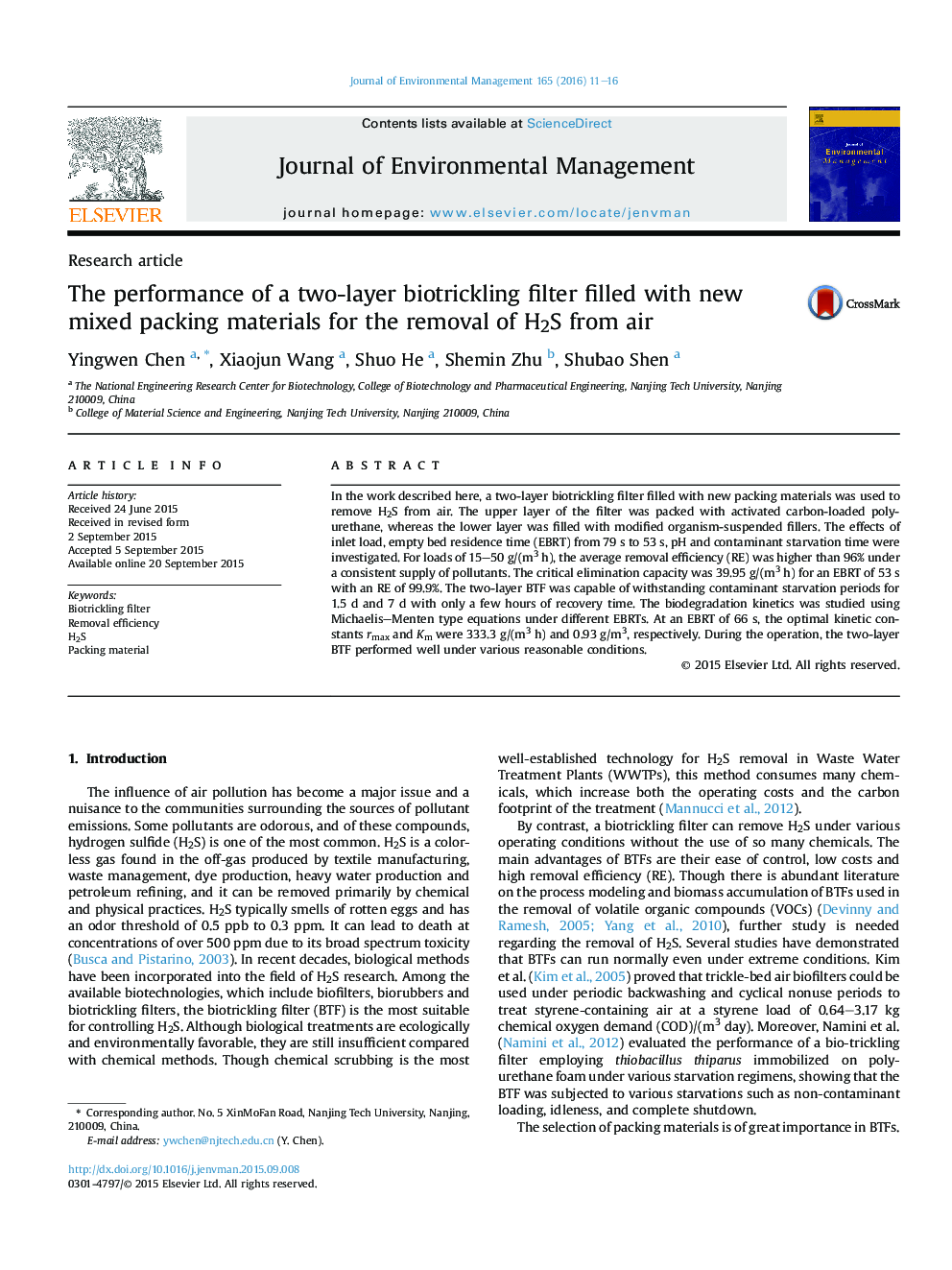| Article ID | Journal | Published Year | Pages | File Type |
|---|---|---|---|---|
| 1055469 | Journal of Environmental Management | 2016 | 6 Pages |
•A two-layer biotrickling filter filled different materials was developed to removal H2S.•Activated-loaded polyurethane and modified organism-suspended fillers were adopted.•The critical elimination capacity was high as 39.95 g/(m3 h) with EBRT of 53 s.•BTF was capable of withstanding contaminant starvation periods of 1.5 d and 7 d.•Kinetics constants rmax and Km were calculated as 333.3 g/(m3 h) and 0.93 g/m3.
In the work described here, a two-layer biotrickling filter filled with new packing materials was used to remove H2S from air. The upper layer of the filter was packed with activated carbon-loaded polyurethane, whereas the lower layer was filled with modified organism-suspended fillers. The effects of inlet load, empty bed residence time (EBRT) from 79 s to 53 s, pH and contaminant starvation time were investigated. For loads of 15–50 g/(m3 h), the average removal efficiency (RE) was higher than 96% under a consistent supply of pollutants. The critical elimination capacity was 39.95 g/(m3 h) for an EBRT of 53 s with an RE of 99.9%. The two-layer BTF was capable of withstanding contaminant starvation periods for 1.5 d and 7 d with only a few hours of recovery time. The biodegradation kinetics was studied using Michaelis–Menten type equations under different EBRTs. At an EBRT of 66 s, the optimal kinetic constants rmax and Km were 333.3 g/(m3 h) and 0.93 g/m3, respectively. During the operation, the two-layer BTF performed well under various reasonable conditions.
